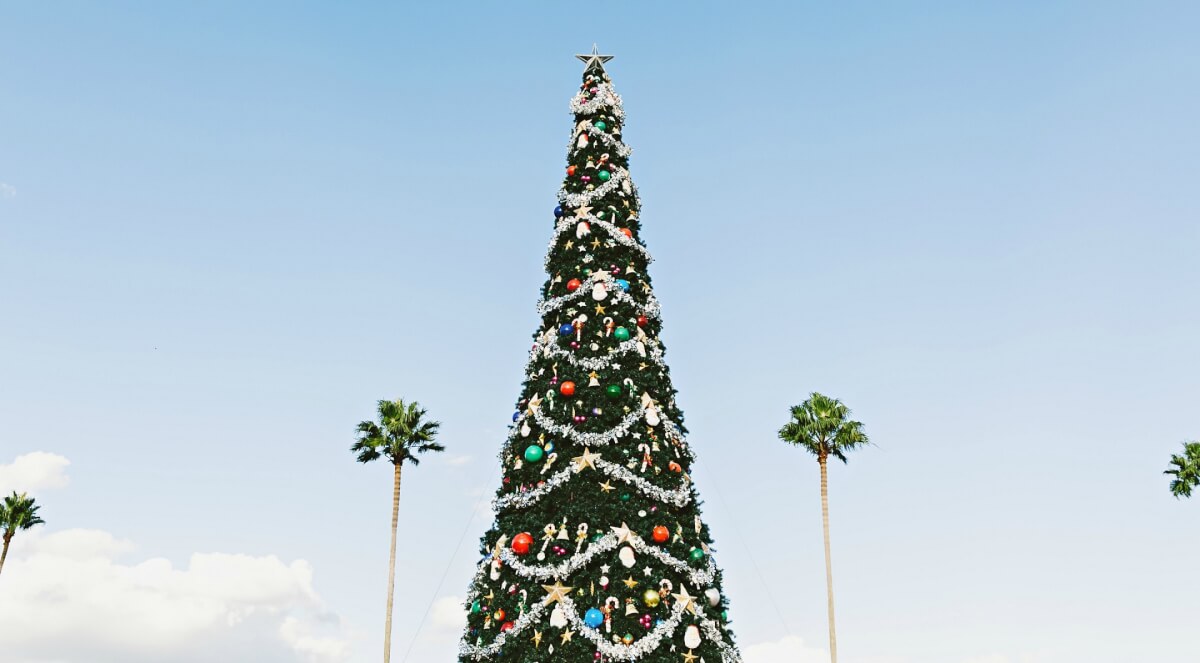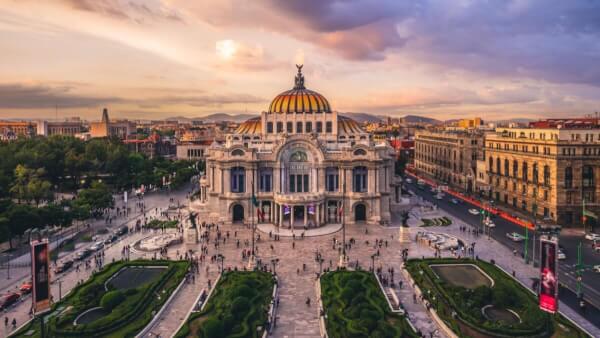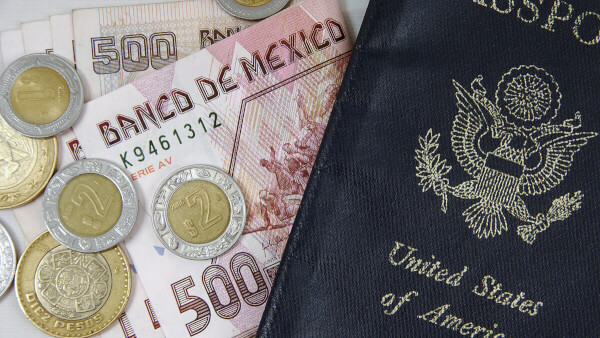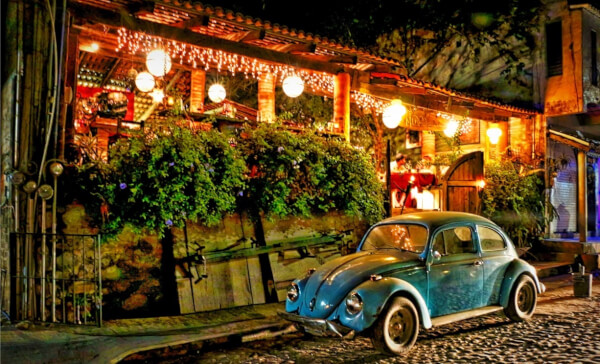Renting in Mexico City as an American: What to know
Thinking about moving to Mexico City? Find out what you need to know about renting in Mexico in this guide.

It’s pretty well known that Mexico knows how to party. And Christmas is the biggest party of them all - a time for sharing traditional activities with family and friends, and naturally great food and drinks too.
If you’re lucky enough to be spending Christmas in Mexico for the first time, you’re in for a treat. From the 12th of December right through to Three Kings Day on the 6th of January, there’s always something going on, including fireworks, pageants, piñatas, and parties.
Pull up a chair. Here’s everything you need to know about Christmas in Mexico.
Different regions of Mexico have slightly different Christmas traditions - but wherever in Mexico you find yourself over the festive season, you’ll find a joyous celebration of the season with hints to the religious significance.
During December you’ll see Nacimiento (nativity) scenes erected around Mexico, in town squares, and private homes. These are often life-sized, and can include many figures other than the holy family. You might find birds and animals or women cooking dinner included in the montage, for example. The characters are added as the month goes on, with Jesus added on Christmas Eve and the three kings on the 6th of January.
Christmas starts in earnest on December 16th with the Posada (Inn) processions. The Posada processions commemorate the story of Mary and Joseph searching for a place to stay for the birth of Jesus. Each evening from December 16th to Christmas Eve, children parade around the streets, going from house to house singing at the homes of friends and neighbours. At each house they’re told that there’s no room for them, until finally someone lets them in for a party. In this way, the party moves from place to place each day and is celebrated with food, drink, fireworks, and a piñata.
On Christmas Eve, the procession is held before everyone goes off to Midnight mass. That’s known as La Misa Del Gallo (mass of the rooster). You can expect lots more fireworks over the course of Christmas Eve and Christmas Day to mark the occasion.
Flor de nochebuena (the red poinsettia flower) is a traditional decoration for Christmas in Mexico. The name in Spanish means ‘Christmas Eve flower’. Legend has it that a poor girl picked some weeds to take to church to offer baby Jesus. Her neighbours all looked down on her, but because she brought the gift with love, the weeds transformed on the church steps to red poinsettia flowers.
Similar to Spain, Mexicans also celebrate Día de los Santos Inocentes (Day of the Innocent Saints) on the 28th of December, which is similar to April Fool’s Day. This light-hearted tradition commemorates the story of the killing of the innocents, when King Herod ordered babies to be killed in an attempt to murder the baby Jesus.
Most people will share Christmas with their family and friends, eating at home or at the home of a family member. The largest celebratory meal is eaten on Christmas Eve and will consist of turkey or ham, or in some regions salted cod along with plenty of sweet treats. All throughout the Christmas season you’ll see tamales - stuffed dough, steamed in a corn husk - being eaten. These can be filled with meat, vegetables or cheese, and are one of the most traditional celebratory foods in Mexico.
Another special dish of the season is the Rosca de Reyes (King’s Ring) cake, which is decorated with dried or candied fruits. These are eaten on Epiphany when family and friends will typically have another party. There are parties held also in offices and workplaces to make sure nobody misses out. Usually in these cakes there are 1 or 2 hidden figures - one of the baby Jesus and one of the three kings. If you find the baby Jesus in your slice of cake, you have to host the next party of the season on Candlemas day, the 2nd of February. And if you find the king - you have to pay the costs of the party for Epiphany. Despite this, it’s considered extremely lucky to find either figure.
In some areas of Mexico, presents are given on Christmas Eve, and in others on January 6th for Epiphany. Extremely lucky children might even get some gifts on both days. Similarly, there are different traditions about who brings gifts, with some families saying it's Santa while others say that the baby Jesus brings the gifts himself.
Gift-giving in Mexico isn't as important as spending time with family and friends. Children will get gifts of course, but the focus is still on traditions and religion. Even though the season is becoming increasingly commercialized.
It’s the law in Mexico that employers must pay their staff an additional bonus payment of 15 days pay during December. This is given to all workers and is usually used to pay for Christmas.
Even with the Christmas bonus, the sheer amount of partying done means it’s an expensive season. If you’re an expat living in Mexico you might need to move money between different bank accounts for gifts or to pay for other expenses during the festive period. If you hold your money in different currencies, you’ll likely need to complete some form of international money transfer. Transfers placed through your regular bank or money transfer service might be advertised as free or cheap, but they rarely are. In fact, banks and transfer services often add a markup to the exchange rate. That means a profit for them and a poor deal for you.
If you need to send money to Mexico from an overseas account, it pays to understand your options. You might get a better deal with a specialist service like Wise.
There are no sneaky hidden charges with Wise, and the transaction is done using the real exchange rate - the one you’d find on Google. That means you only pay the lowest possible fee, clearly shown upfront.
Another good option is the Wise borderless multi-currency account, which allows you to hold money in several different currencies, including Mexican pesos. You can make and receive direct payments using the currencies you hold, or simply exchange your funds using the real exchange rate and a small transparent fee whenever it suits you. From winter of 2017/2018, you’ll also be able to get a debit card to pay for goods and services from your borderless account and withdraw cash from an ATM.
See for yourself if you can get a better deal with Wise.
Christmas is a long season in Mexico, running from the 12th of December through to Epiphany with yet another celebration to mark Candlemas on February 2nd.
Important festive dates for Mexico:
| Mexican Christmas Holidays | Date |
|---|---|
| Nochebuena (Christmas Eve) | 24th December |
| Navidad (Christmas) | 25th December (Public Holiday) |
| Día de los Santos Inocentes (Day of the Innocent Saints) | 28th December |
| Nochevieja (New Year’s Eve) | 31st December |
| Día de Año Nuevo (New Year’s Day) | 1st January (Public Holiday) |
| Fiesta de los Tres Reyes Magos (Epiphany) | 6th January |
Christmas in Mexico is colourful and fun. It’s a great time to reconnect with family and friends and observe traditions and customs which have been celebrated for generations. You’re bound to have a fantastic time. Feliz Navidad!
*Please see terms of use and product availability for your region or visit Wise fees and pricing for the most up to date pricing and fee information.
This publication is provided for general information purposes and does not constitute legal, tax or other professional advice from Wise Payments Limited or its subsidiaries and its affiliates, and it is not intended as a substitute for obtaining advice from a financial advisor or any other professional.
We make no representations, warranties or guarantees, whether expressed or implied, that the content in the publication is accurate, complete or up to date.

Thinking about moving to Mexico City? Find out what you need to know about renting in Mexico in this guide.

If you live or work in Mexico, Taking up dual citizenship might make your life easier. Here’s everything you need to know to get dual citizenship with Mexico.

Find all you need to know about how to get citizenship in Mexico in this handy guide.

Find all you need to know about getting a cross border mortgage in Mexico

Americans love Mexico. They travel to the large country at their southern border often. It’s one of the to international tourist destinations for traveling...

Owning a car in Mexico is a good idea; between huge cities like Mexico City that stretch across massive geographic footprints and widespread towns and...